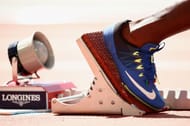Athletes prepare for years and still miss out on Olympic qualification by milliseconds as they are unable to meet the standard athletic qualification time for the Olympics. The same happened to Dutee Chand at the Indian Grand Prix as she failed to qualify by just 0.02 seconds.
The timings and the records are getting better and more accurate event by event with technological advancement. But how do the instruments which are now in use generate the most accurate timings?
Timings in Olympics can be classified into three categories of sports.
- Sports played in set phases of time, such as Basketball and others, in which the stopwatch clocks are efficient.
- Sports that are not time-bound by set time intervals, such as golf, Tennis, and Table Tennis.
- The ones which are purely time-dependent such as Athletic events. These are the events where these technological advancements come in handy in deciding the winner, whereas the stopwatches would not suffice for the events.
Timing the athletes in athletic events

At athletic events, when the athletes are placed at their starting blocks, they wait for the race to commence. Those blocks are installed with sensors and cameras.
When the sound of the gun goes off, the sound is heard by an inbuilt speaker in the starting block and the sensors immediately trigger the clock within 0.001 seconds. Hence, the gun sound signals both players and the clock to start the race.
On the opposite end of the track, the finishing line has multiple tracking instruments. It is surrounded by 2 photobeam units on the opposite side of the track, a trackside clock and the most important instrument of all, the photofinish camera, which helps provide an accurate timing of the race for each athlete.
How is a photofinish camera used to determine timings in Athletic events?
A race gets completed when a player contacts the finishing line with their torso. In 100m, 200m and 400m races, it is usual for athletes to cross the line at the exact same second. Hence, here is where the photofinish comes into use.
These cameras have a field view of the finishing line with a single frame forming a narrow image, only of the athletes touching the line. These cameras get triggered by motion and by lasers.
Hence, as the athletes cross the line, these photofinish cameras with a frame rate of 20,000 frames per second, click thousands of images. The images are then converted into one big panoramic image.
This image displays the graph of players touching the line with the difference in time of 1/10,000 of a second, and that is when the official timings are released after the judges verify it.
History of usage of photofinishing cameras in Athletics
Modern Olympics, in contrast to the Ancient Olympics, have always kept a note of timings of their athletic events. Stopwatches have been in use since 1731. But with the introduction of electronic gadgets, the timings of such athletic events have been more accurate than ever and it has also reduced cheating.
Photofinish cameras have been used in horse racing events since the 1800s, and are now used for athletic events as well.These cameras made their debut at the 1912 Olympics in Stockholm.
ALSO READ: Hima Das picks up an unfortunate injury at Interstate Athletics Championships
